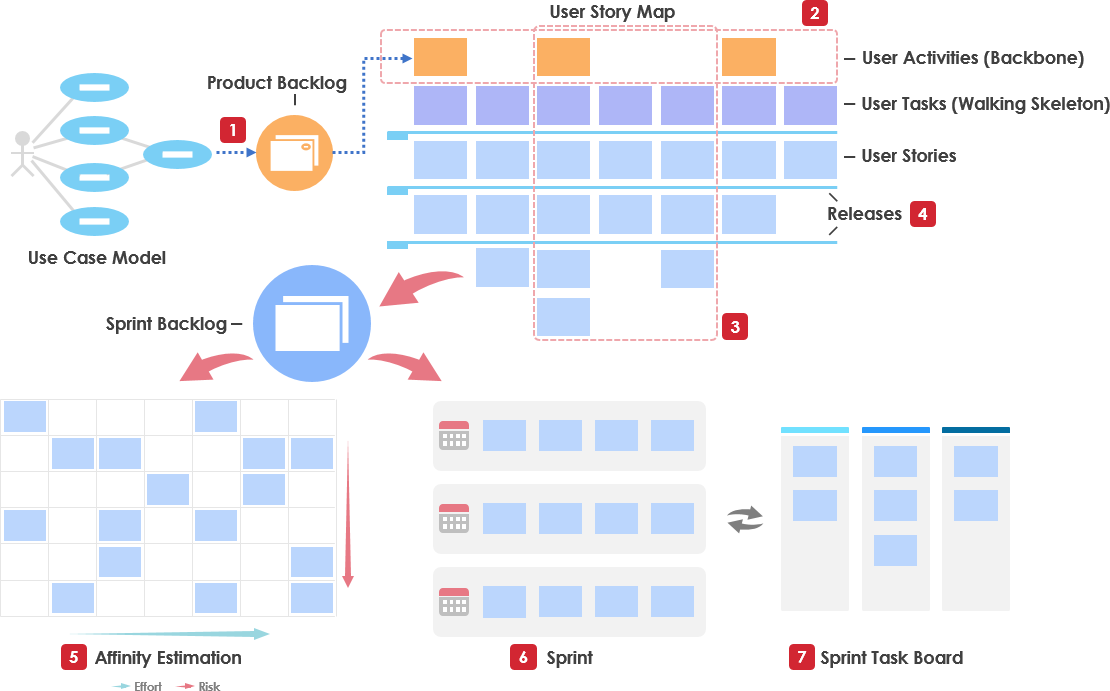Navigating Agile Development: Use Cases vs. User Stories
Introduction
In the ever-evolving landscape of Agile development, choosing the right tools to capture and convey requirements is paramount. Among the contenders, Use Cases and User Stories stand out, each offering a unique perspective on system functionality. This exploration aims to dissect their roles, strengths, and ideal use scenarios, guiding Agile practitioners in crafting a symphony of development that resonates with end-users.
Use Cases vs User Stories
Let’s delve into the world of Agile development, comparing the use cases and user stories to see which is the MVP (Most Valuable Player).
Use Cases vs. User Stories: Unveiling the Agile Arsenal
Agile development has revolutionized the software development landscape, emphasizing flexibility, collaboration, and continuous improvement. In this dynamic environment, two tools stand out: Use Cases and User Stories. Both play crucial roles in capturing requirements, but they differ in their approach and granularity.
Use Cases: The Macro View

Use cases are like the architects of the software world. They provide a high-level, holistic view of how a system will behave under various conditions. Use cases are typically detailed descriptions of how a system interacts with an external entity, often a user, to accomplish a specific goal. Think of them as the big picture narrative.
Example: Online Shopping System
Use Case: Make a Purchase
- Actor: Customer
- Trigger: Customer selects items for purchase
-
Main Flow:
- Customer adds items to the cart
- Customer proceeds to checkout
- Customer enters shipping and billing information
- Customer confirms the purchase
- Alternate Flow: Payment failure
Use cases excel at capturing system behavior from a macro perspective. They are great for understanding the overall functionality of the system. However, in the fast-paced world of Agile development, the devil is often in the details.
User Stories: The Micro Adventures

Enter user stories, the agile warriors of granularity. User stories are short, simple descriptions of a feature told from the perspective of the person who desires the new capability, usually a user or customer. These are bite-sized increments of functionality that can be developed in a single iteration.
Example: Online Shopping System
User Story: As a Customer, I want to receive an email confirmation after completing a purchase, so I can keep a record of my transactions.
User stories bring a human touch to development, focusing on the needs and expectations of end-users. They are flexible and allow for quick adaptation to changing requirements.
Choosing the Right Tool for the Job:
- Use Cases for Clarity: Use cases shine when you need to understand the broader functionality of a system. They are perfect for initial project scoping and creating a roadmap.
- User Stories for Agility: When working in an Agile environment, user stories are your best friends. They promote incremental development, allowing teams to deliver value in small, manageable chunks.
The Agile Symphony: Use Cases and User Stories in Harmony
In an ideal Agile development scenario, use cases and user stories work in harmony. Start with use cases to set the stage and understand the broader picture. As the development progresses, break down the use cases into user stories. This approach combines the best of both worlds, offering a comprehensive understanding of the system while allowing for the agility and responsiveness that Agile development demands.

Visual Paradigm emerges as a powerhouse in the Agile development realm, seamlessly integrating essential techniques like Use Case, User Story, and Story Mapping into a unified and automated end-to-end process. This comprehensive approach addresses the limitations highlighted by Alistair in User Story techniques, providing a robust solution by supplementing it with Use Case and Story Mapping tools.
The integration goes beyond the trio of Use Case, User Story, and Story Mapping, encompassing additional agile tools such as affinity estimation, Kanban, and more. This all-in-one suite empowers teams to manage their Agile projects with unprecedented speed, efficiency, and intelligence.
Conclusion
In the intricate dance of Agile development, Use Cases and User Stories take center stage. While Use Cases provide a panoramic view of system behavior, User Stories zoom in, capturing the nuances of user needs. Discover the ideal scenarios for each tool and learn how their collaboration creates a harmonious development process, balancing the grand narrative with the finer details. It’s not a battle of Use Cases vs. User Stories but a strategic alliance to compose an Agile masterpiece.
Both use cases and user stories have their roles to play in the Agile orchestra. Use cases provide the melody, setting the tone for the entire composition, while user stories contribute the intricate harmonies, ensuring that each note resonates with the end-users’ needs. In this symphony of development, it’s not about Use Cases vs. User Stories but how they can create a masterpiece together.

